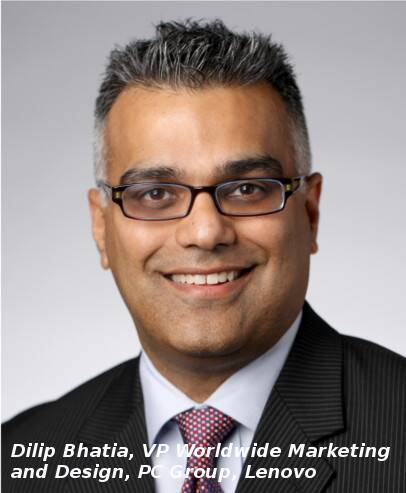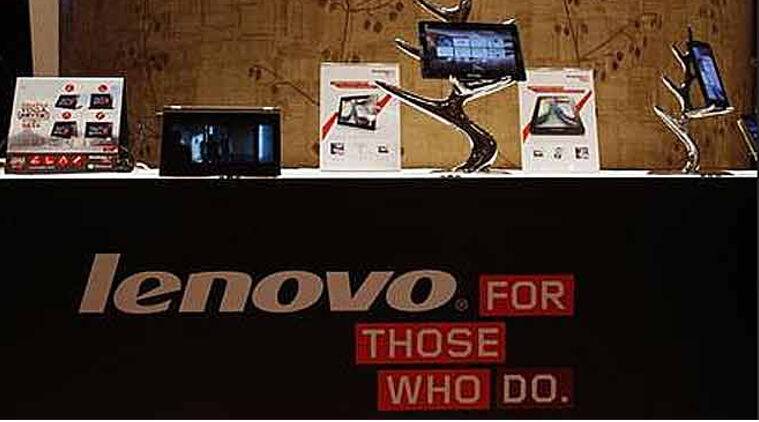Global PC leader Lenovo is India’s third largest PC brand. But it is aiming for the top with new devices like the Lenovo Yoga 3 Pro. Dilip Bhatia, Vice President Worldwide Marketing and Design, PC Group, Lenovo talks to Nandagopal Rajan about innovation, offering choice and the PC market in general.
READ: Lenovo Yoga 3 Pro review
How will you try to woo first time users in India with a device like the Yoga 3 Pro?
 In Lenovo our strategy has always been to offer customers choice. There is no one product that fits all. We know there will be those who will opt for the Yoga 3 Pro and there will be price conscious customers who will want a product that offers then just entry-level computing. We also have our commercial ThinkPad and ThinkCentre lines that can take on high-end usage. And that is what has allowed us to become number 1 in the PC space globally with over 20 per cent market share globally.
In Lenovo our strategy has always been to offer customers choice. There is no one product that fits all. We know there will be those who will opt for the Yoga 3 Pro and there will be price conscious customers who will want a product that offers then just entry-level computing. We also have our commercial ThinkPad and ThinkCentre lines that can take on high-end usage. And that is what has allowed us to become number 1 in the PC space globally with over 20 per cent market share globally.
The PC segment is declining in most markets, but at the same time computers have never been this cheap before. Do you see a spike waiting to happen in some markets like India?
PC penetration in some of the emerging markets is still very low. From a Lenovo perspective, as long as we continue to focus on innovation we should be able to grow our business in these markets.
Is it becoming difficult to innovate now? Has it hit a saturation point?
I don’t think so. The car market is the best example. Despite the large number of players it has not stopped innovating. Similarly, in the PC space, the 2-in-1 convertible is a great example of innovation. In fact, we had the Yoga device in our labs back in 2005, but at that time it was thicker and we did not want to launch that product. But technology has improved, and now the Yoga 3 Pro which is among the thinnest in the world. Technology is constantly changing, offering better experiences. There is still plenty of room to innovate.
What was the thought behind the Yoga 3 Pro?
Lenovo is putting a lot of focus on innovation. It is part of our culture our technology, our product and our strategy. We are looking at customer pain points and trying to understand them better. That that is the key to our products. The Yoga 3 Pro was a good example of getting end-user feedback on what they like and what they don’t. We have a full process of getting customer feedback before we even start on a product. We wanted to come up with a lighter version of product. We were also focused on the fact that we were going after the design trendsetters, who really want to stand our overall.
 The watch-type hinge of the Yoga 3 Pro device. (Source: Nandagopal Rajan)
The watch-type hinge of the Yoga 3 Pro device. (Source: Nandagopal Rajan)
From the last version we made improvement like the high resolution screen. It is also much lighter and thinner than its predecessor. There is also the very stylish watch-type hinge for which we have got very positive feedback. It allowed the product to be thinner and fold 180 degree flat when needed.
One of the biggest pain points is battery life. How do you manage that in a device like the Yoga 3 Pro?
There is always a balance. Some people will want more battery life, while others look at portability. That is why we have many choices in our PC portfolio on the consumer and commercial side. On the Yoga 3 Pro we offer six to seven hours of battery life, but we also have devices that can offer up to 14 hours.
Ultrabooks were also a big innovation. But we don’t see much of them now. Why is that?
I identify the ultrabook as anything less than 21mm in thickness. I think they were needed at the time and they drove the industry to create thinner and lighter products. So the ultrabook market now is much bigger than the relatively new 2-in-1 market. But we are seeing some of the benefits of the ultrabooks being applied to the 2-in-1, which is the fastest growing segment now.
A lot of the new PCs are targeting the tablets and large smartphones. But are the 2-in-1s also learning from the success of the tablets?
Absolutely. We are seeing a lot of benefits of the tablets coming to the PC space with great resolution screens, battery life and instant on/off. But tablets are not replacing PCs. They have their own space. What we are seeing is that 80 per cent of the tablets are not leaving home. PCs have become thin and light and they are also not going away. People still need them for their productive uses.
Do you have a specific strategy for the Indian market?
We offer our full portfolio in India. We are number 3 overall as well as in the commercial and consumer spaces separately. We think our Thinkpad line has done very well. We want to become Number 1 overall and with our new devices the market reception has been very good. Our aspirations are high.
Do you keep a market like India in might while designing an entry-level device?
Obviously. We sell a lot of our entry-level devices in India. We also get a lot of feedback from our Indian users. We also apply a lot of our learnings in developing markets like India, Indonesia and Brazil. India is a strategic market for us.
READ: Lenovo Yoga 3 Pro review
